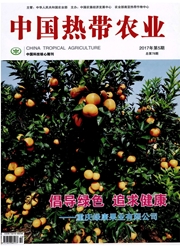

 中文摘要:
中文摘要:
目的 了解本市严重急性呼吸道病毒病原谱的构成情况,以期能够为临床用药提供病原学数据。方法 采用基于DPO技术的多重RT-PCR方法同时检测呼吸道感染13种病毒:人呼吸道合胞病毒(RSV),人鼻病毒(h RV),呼吸道腺病毒(Ad V),人肠道病毒(h EV),人偏肺病毒(h MPV),人冠状病毒(h Co V 229E/OC43),人博卡病毒(h Bo V),甲、乙型流行性感冒病毒(Inf A and Inf B),副流感病毒(PIV 1/2/3),凝胶电泳鉴定结果。结果 累计761份严重急性呼吸道感染患者标本中,共检出病毒阳性标本214份,阳性率为28.12%。除PIV 2和h Co V 229E未检出外,其他11种病原均有被检出,检出率为32.19%,前三位分别是RSV 55份、h RV 45份、Inf B 36份。共有27份病原混合感染标本,其中23份双重感染,4份三重感染,混合感染前三位分别是h RV 18份、RSV 13份和PIV 37份。结论丽水市严重急性呼吸道病毒感染的主要病原体是RSV,除流感病毒外h RV、h MPV、PIV 3、h EV亦为主要单一致病原,h RV、RSV较高的混合感染率提示h RV或RSV的多重感染可能是呼吸道的基础感染。
 英文摘要:
英文摘要:
Objective To understand the composition of pathogenic spectrum of severe acute respiratory virus(SARS) in our city, so as to provide etiological data for clinical drug use. Methods Multiple RT-PCR method based on DPO technique was used to detect 13 viruses of respiratory tract infection simultaneously: human respiratory syncytial virus (RSV), human rhinovirus(hRV), respiratory adenovirus(AdV), human enterovirus(hEV), human metapneumovirus(hMPV), human coronavirus(hCoV 229E/OC43), human bocavirus(hBoV), influenza A and B virus(Inf A and Inf B), and parain- fluenza virus (PIV 1/2/3). Gel electrophoresis was used to identify the results. Results A total of 214 SARS-positive samples were detected from 761 patient samples with severe acute respiratory infection, and the positive rate was 28.12%. In addition to PIV 2 and hCoV 229E which were not detected, the other 11 pathogens were detected, with the detection rate of 32.19%. The first three were RSV in 55 samples, hRV in 45 samples, and Inf B in 36 samples. There were a total of 27 pathogenic mixed infection samples, with double infection in 23 samples, and triple infection in 4 samples. The first three viruses of mixed infections were hRV in 18 samples, RSV in 13 samples and PIV 3 in 7 sam- ples. Conclusion The main pathogens of severe acute respiratory virus infection in Lishui city are RSV. In addition to influenza virus, hRV, hMPV, PIV 3, and hEV are also the main single pathogens. The higher mixed infection rate of hRV and RSV suggests the multiple infections of hRV or RSV may be the basis of the respiratory tract infection.
 同期刊论文项目
同期刊论文项目
 同项目期刊论文
同项目期刊论文
 期刊信息
期刊信息
